 All six of us had expressed to Rasheem that we wanted to do a Himalaya sightseeing flight if possible. So he monitored the weather for us. He said that there had not been a totally clear day for it in a while. The air in the Kathmandu Valley is quite polluted and you can't see the mountains very often. So, this was the morning were it was supposed to be good. We had to get up very early, had breakfast and were at the airport at 7am. He had booked Yeti Airlines tickets for us. The plane had 9 rows of seats, a single one left and double on the right. But they only sell 18 tickets so that everybody has a window seat. Every minute of the flight was exciting because we did have a pretty good view even of the city.
All six of us had expressed to Rasheem that we wanted to do a Himalaya sightseeing flight if possible. So he monitored the weather for us. He said that there had not been a totally clear day for it in a while. The air in the Kathmandu Valley is quite polluted and you can't see the mountains very often. So, this was the morning were it was supposed to be good. We had to get up very early, had breakfast and were at the airport at 7am. He had booked Yeti Airlines tickets for us. The plane had 9 rows of seats, a single one left and double on the right. But they only sell 18 tickets so that everybody has a window seat. Every minute of the flight was exciting because we did have a pretty good view even of the city. As soon as we saw the range of mountains we wondered "which one, which one?". We had been given a panoramic folder with the mountain range which had the names and heights of the peeks written on it which was great. Also, the flight attendant came round and pointed then out to us. There were actually quite a large number of them and I did take a lot of pictures.
But here, I think that is it. How exciting. The high left one of the double in the middle. Sagarmatha (Mt. Everest) 29028 ft.
The stewardess called us one by one forward and we were allowed to look out from the cockpit. That was exciting too. This was my turn.
Ah, an even better view.
And a close up.
Now James has a turn in the cockpit and he takes my camera with him.
Just then the plane turns to go back so he has the range in front of him lengthwise.
And another picture.
And another. It is also interesting to look down into the crevasses.
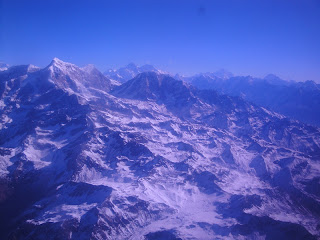
Glaciers and snowfields.
I thought "where in the world did James' plane land" when he came here 1974 to trek in the area around Mount Everest? He trekked for about 3 weeks.
When we get closer to Kathmandu we can see habitation.
Can't imagine living here.
Terraced fields.
And then we are on our way to Bhaktapur Durbar Square, the third one to see.
First we stop for you know what, but again I decide I really don't have to go so urgent and I think everyone thought the same when they saw the facilities.
Bhaktapur is an ancient Newar (*) town in the east corner of the Kathmandu Valley, Nepal. It is the third largest city in this valley and was once the capital of Nepal during the great Malla Kingdom until the second half of the 15th century.
It is listed as a World Heritage by UNESCO for its rich culture, temples, and wood, metal and stone artwork.
* The Newa people are the indigenous people of Nepal's Kathmandu Valley. Newars are a linguistic community of mostly Tibeto Burman and some Indo-Aryan ethnicity, bound together by a common language.
The entry to the square.
Tourists have to pay entry. Rasheem is buying our tickets.
The Durbar square in Bhaktapur was severely damaged by an earthquake in 1934 and hence appears more spacious than the other ones located at Kathmandu and Patan.
Bhaktapur's main square, Durbar Square, houses the 55-window Palace which was constructed by King Jitamitra Malla and was home to royalty until 1769. It is now a National Gallery
Golden Gate which leads into Mulchok Court which is home to the Taleju Temple. This temple, like others in the main towns of the Kathmandu Valley, is dedicated to the goddess Taleju Bhawani and includes shrines to both the Taleju Bhawani and Kumari. Entrance to the temple is restricted to Hindus and the living goddess strictly cannot be photographed.
The Durbar square is surrounded by spectacular architecture and vividly showcases the skills of the Newari artists and craftsmen over several centuries. The royal palace was originally situated at Dattaraya square and was only later moved to the Durbar square location.
The royal family's bath.
The waterspout with Ganesha's transport, the Rat.
The Rat.
Some of the carvings are very graphic. Birth of a baby on this one.
It would have been even nicer if you wouldn't have to dodge motorbikes. They were not going slow either and sometimes whooshed by you in the narrow cobbled streets.
On the way to Pottery Square.
Yes, the name fits. This the factory and the clay pots are first dried in the sun before glazing and firing, Of course, production has to stop during the monsoon season in July and August. We were told that these things are mainly for export. I bought three little elephants to hold incense sticks.
A water faucet in the square. Women came to get water but it is only turned on for 2-3 hours per day so there is always a line for it. We heard one big argument ... but don't know about what. The water? Fantasy goes wild. It could be about anything like a husband too.
Another well on the way to the Thanka Painting School. This woman was clever not to stay in line at the other place. Of course this is more work, also this water is not drinkable
.
 The Thanka Painting School.
The Thanka Painting School.And, of course, there was also a sales room. But it was very interesting, beautiful things.
And back to the square for lunch.

Rasheem had made lunch reservations here. A great place.
Local food (in a sanitized tourist way) and local beer.
This is the only 5 story pagoda style temple that survived the 1934 earthquake.
Ah, some of the things you could see when the door was open. So interesting.
We bought grandson William's wood puzzle elephant here and a tiny brass one too.
And then the bus brought us to the Pashupatinath Temple with the cremation sites. Some of us had really mixed feelings about this ... intruding etc. Rasheem assured us that we were not intruding because it is a way of life and actually families might not mind at all to have extra people around. Of course we did not go so close anyway and were on the other side of the river (which was actually pretty dry at the moment).
The dead body is put on one of the pedestals and covered with wood and straw.
The priest brings fire from the eternal flame and the oldest son (or if there is none another most senior in the family) and lights it after all walked around several times.
This should to take place within about3 hours of death if possible so that the sole can be released with the smoke to heaven. The ashes have to be washed away with the river.
The (white) Pashupatinath Temple is one of the biggest Hindu temples of Lord Shiva in the world, located on the banks of the Bagmati River. The temple served as the seat of the national deity, Lord Pashupatinath, until Nepal was secularized. The temple is listed in UNESCO World Heritage Sites list.
Believers in Pashupatinath (mainly Hindus) are allowed to enter the temple premises. Anyone not born in Nepal or India is considered a non-Hindu by the temple authorities. Non-Hindu visitors are allowed to have a look at the temple from the other bank of Bagmati river.
Pashupatinath Temple is the oldest Hindu temple in Kathmandu. It is not known for certain when this Temple was founded. But according to Nepal Mahatmaya and Himvatkhanda, the deity here gained great fame there as Pashupati, the Lord of the Animals.
The temple was first established in the 17th century. The priests who perform the services at this temple have been Bhat-Brahmins from South India (Karnataka) origin since last 350 years. The chief priest is answerable only to the King of Nepal and reports to him on temple matters on a periodic basis.
Of course this info from Wikipedia might not be current any longer since they have done away with the King.
 There was a very important religious festival the next day which had brought many of these Sadhu (holy men) to town. They beg with bowls for their food and take money and pose when you want to take a picture.
There was a very important religious festival the next day which had brought many of these Sadhu (holy men) to town. They beg with bowls for their food and take money and pose when you want to take a picture.Some of the Sadhu live in caves in this hill. Some pilgrims go to them for advice (or blessing, I am not sure which).
On the way back to the bus.
And on to Boudhanath.
Boudhanath is one of the holiest Buddhist sites in Kathmandu. Located about 11 km (7 miles) from the center and northeastern outskirts of Kathmandu, the ancient stupa's massive mandala makes it one of the largest spherical stupas in Nepal. The Buddhist stupa of Boudhanath dominates the skyline. The influx of large populations of Tibetan refugees from China has seen the construction of over 50 Tibetan Gompas (Monasteries) around Boudhanath. Since 1979, Boudhanath is a UNESCO World Heritage Site. Swayambhunath, it is one of the most popular tourist sites in the Kathmandu area.
Looking back at the entrance. Well, it will also be our exit.
The large one is surrounded by little ones.
This evening we are eating at the Hotel's Kakori Restaurant. After the meal the server offers us something to chew on to "cleanse your breath". You just pour it with the spoon into hollow of your hand and then chug it into your mouth.
The kitchen stove.
And the tandoori oven for the naan bread.
The hotel entrance flower beauties with candles.












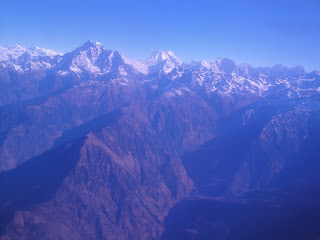















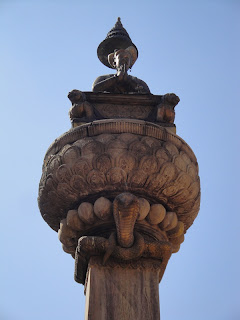


































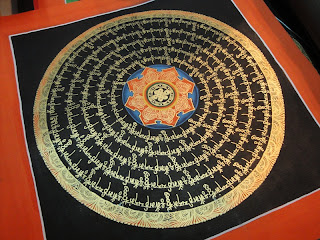


















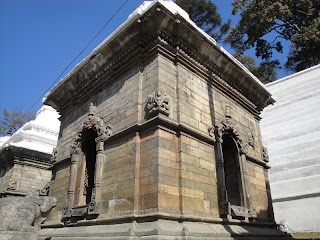


























No comments:
Post a Comment